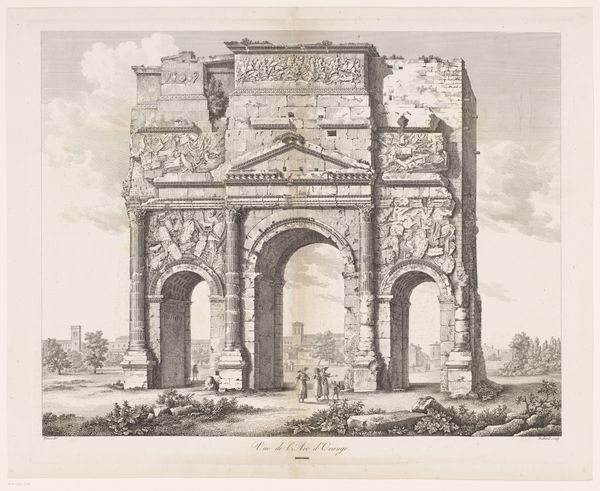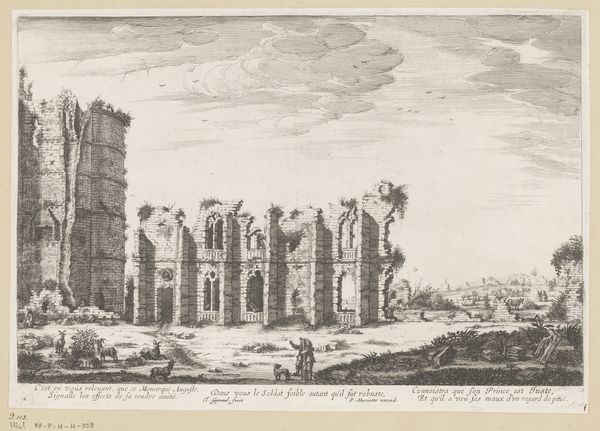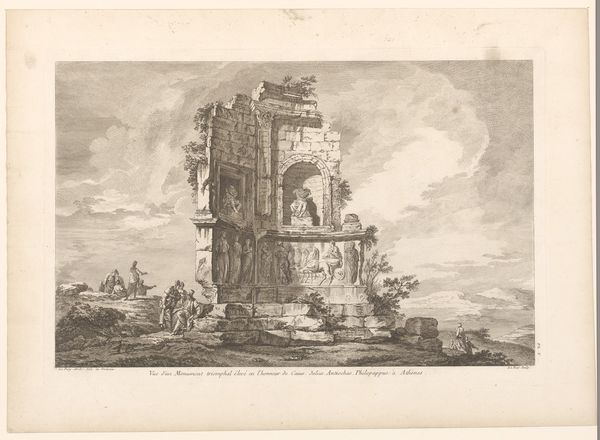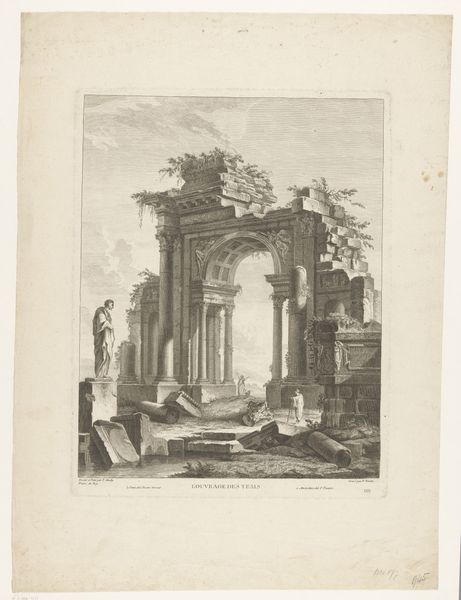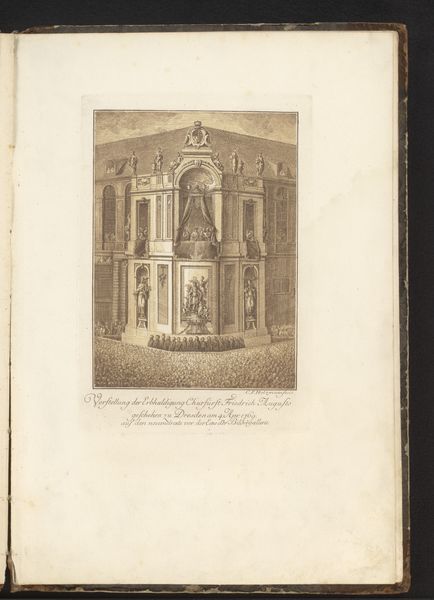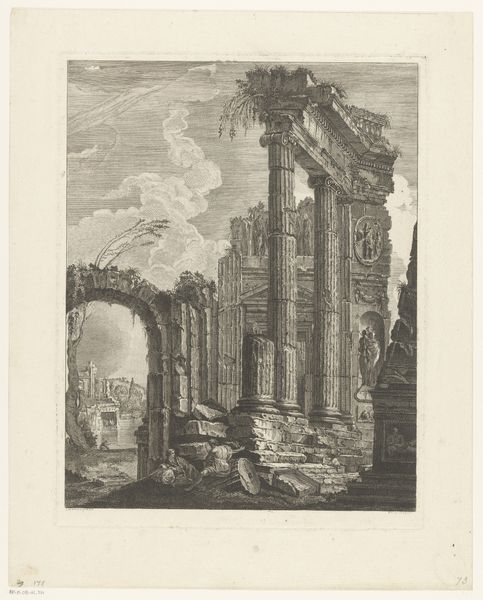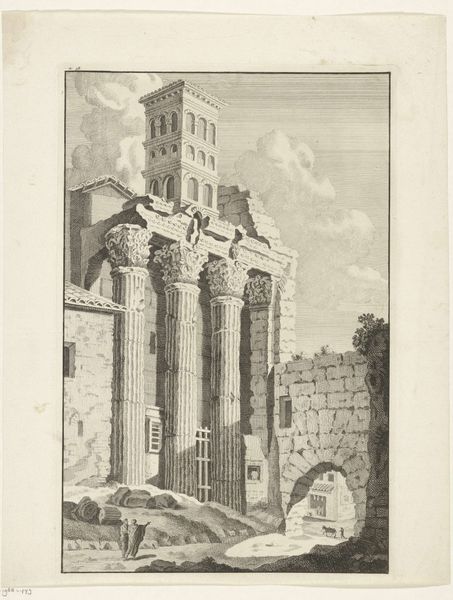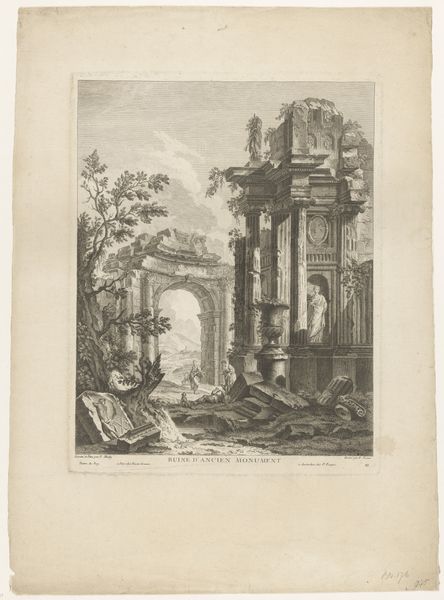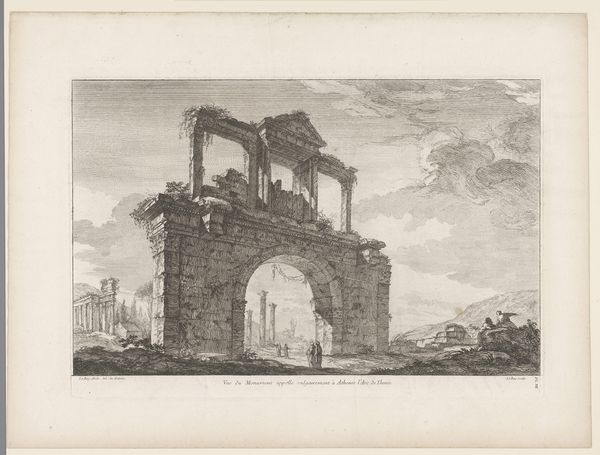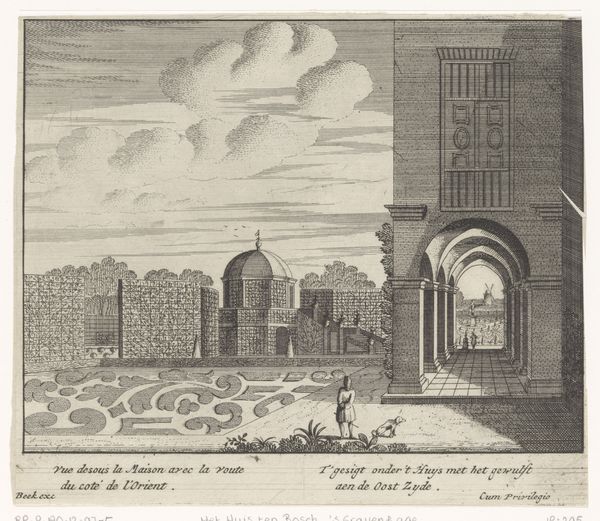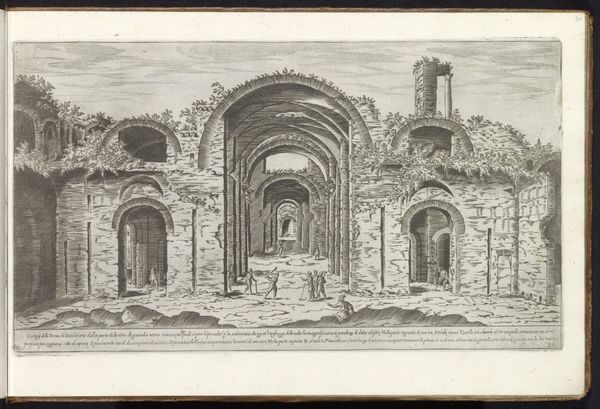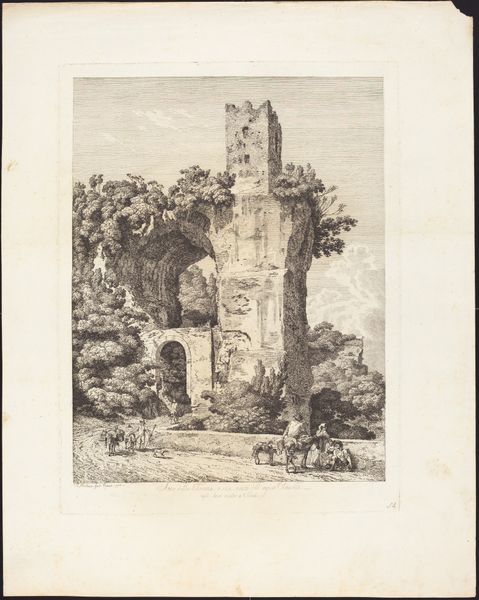
engraving, architecture
#
neoclacissism
#
landscape
#
geometric
#
history-painting
#
engraving
#
architecture
Dimensions: height 485 mm, width 383 mm
Copyright: Rijks Museum: Open Domain
Louis Pierre Baltard made this print of the Triumphal Arch of Orange, likely in the late 18th or early 19th century. The image reflects a broader cultural interest in classical antiquity, but more than that, it speaks to the power of institutions to shape our understanding of the past. The print meticulously depicts the Roman arch located in what is now southern France. We see its architectural details, including the columns, friezes, and sculptures that would have conveyed messages of imperial power. The image creates meaning through its visual codes, reminding viewers of the grandeur of the Roman Empire and subtly aligning it with contemporary French ambitions. It’s important to consider how institutions like museums and academies played a role in promoting such imagery, reinforcing certain narratives about history and national identity. Art history reminds us that the meaning of art is never fixed. It is contingent on its social and institutional context. By studying historical sources, we can better understand the complex interplay of power, culture, and artistic production.
Comments
No comments
Be the first to comment and join the conversation on the ultimate creative platform.
